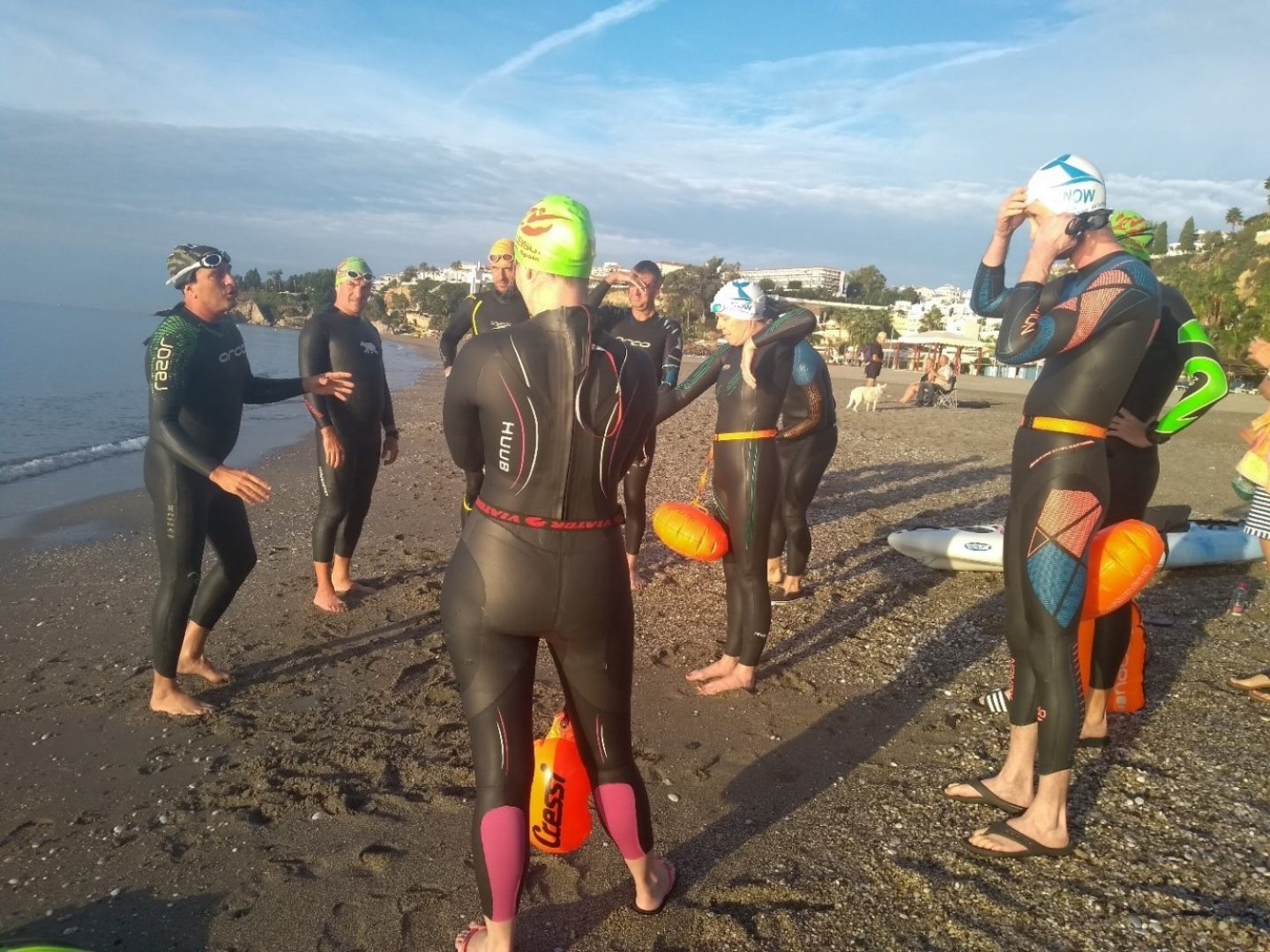If you are swimming in the sea, lakes and rivers then you probably have an inherent desire to connect with nature reap the associated mental and physical health benefits. If you are like me, you hopefully want to make sure your impact on this natural environment is minimal. We all make sure we don’t drop litter, damage the places where we swim and try not to disrupt other users of the water (human, animal or plant) but what about the kit and products we use? What impact do they have on our swimming environmental footprint?
I’ve always tried to re-cycle and use a little plastic as possible. More recently, I’ve been thinking more about what I use to support my swimming and their potential impact on the environment. I was amazed at what I have found out and I am certainly going to ask more questions about the products I buy and use, not just for swimming but for all my activities. I’m not going to name and shame any brands or advise on which ones to buy but I’d like to arm you with data and questions you may like to consider before you purchase your next item.
Wetsuits
Rewind to the 1930’s when synthetic foamed rubber was invented and was called neoprene. Neoprene is an elastomer with the chemical name polychloroprene. Polychloroprene is produced through a chemical process by binding strings of a clear liquid called chloroprene together. The original chloroprene wetsuits are made with petroleum-based chemicals, which are harmful to the environment. Luckily most swimming wetsuits have moved on from this technology.
Beware of SBR ‘neoprene’ wetsuits. SBR is fake neoprene which is stiff and not UV and ozone resistant. This cheap foam absorbs water and is only suitable for laptop sleeves or beer coolers. Wetsuits should not be made with SBR.
It might sound strange, but it’s common practice these days that a limestone rock will eventually become your high-end wetsuit. In the 1960s, a new way of making neoprene was invented. The main neoprene compound remains chloroprene, but instead of using dirty petroleum-based ingredients it now uses calcium carbonate from limestone to form chloroprene rubber chips. These rubber chips are melted down in an oven and go through a chemical process. The melted substance is infused with air bubbles and baked into a block of neoprene foam. This block is then sliced in any neoprene thickness needed to make your wetsuits, ranging from 0.4mm to 10mm thickness and everything in between. The elongation, flexibility and insulation characteristics of limestone neoprene is the same or better than its predecessor petroleum-based neoprene but it’s less harmful to the environment. Limestone neoprene is also one of the most flexible and warm types out there.
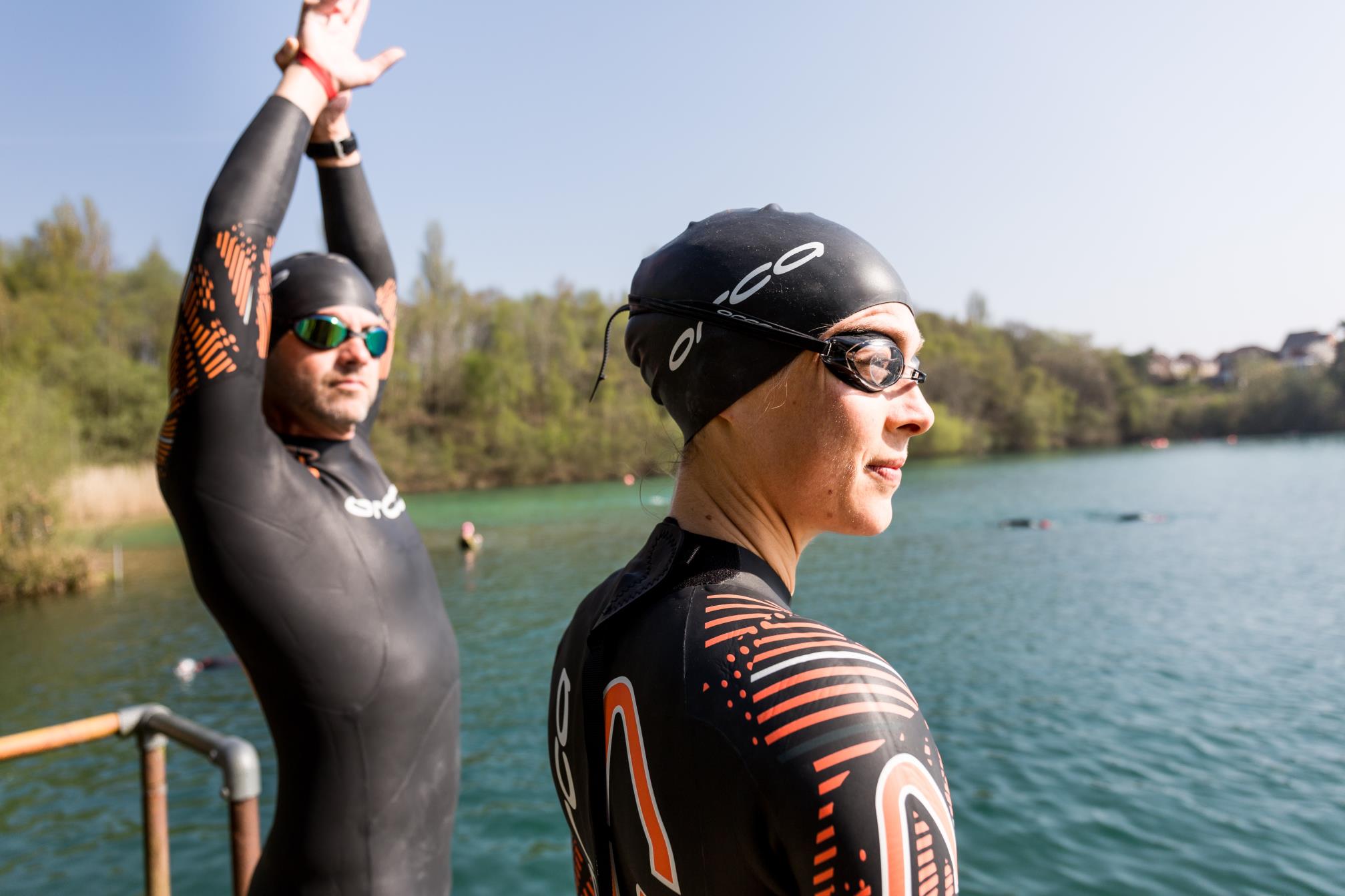
Get your FREE Open Water Swimming Sessions E-Book
The invention of limestone neoprene made a big impact on wetsuit manufacturing, which transformed the high-end wetsuit industry to become more durable and environmentally friendly. Some companies have different names for their more environmentally friendly neoprene. You might have heard of Japanese Yamamoto neoprene which is used in some high-end wetsuit’s models. Other versions of limestone neoprene are Bioprene (but note that some people use the word “bioprene” to imply swimming without a wetsuit and relying on your body’s own insulative properties) and Geoprene wetsuits. Yulex is another alternative neoprene made out of natural rubber. Unfortunately this has limited availability.
When buying a wetsuit, it’s also worth checking what the brand says about its environmental policies, and the packaging they use for shipping.
Wetsuit recycling: It’s still impossible to recycle neoprene itself back into raw neoprene to make new wetsuits. The combination of different materials used in a wetsuit make this a challenge. However, there’s a great way to give your wetsuit a second life. By shredding it into pieces, neoprene can be up-cycled into qualified products such as a new yoga mat. Other examples of recycled neoprene products are boxing bag fillings.
Key take-away: Try to purchase a good quality wetsuit made from limestone neoprene that will last a long time. Keep it in good condition using biodegradable cleaning and conditioning products and try to repair rather than replace. If you do need to change wetsuit and your old one is still in good condition, then consider donating to charity or giving it to a local swimming club. Orca wetsuits are a good brand to take a look at.
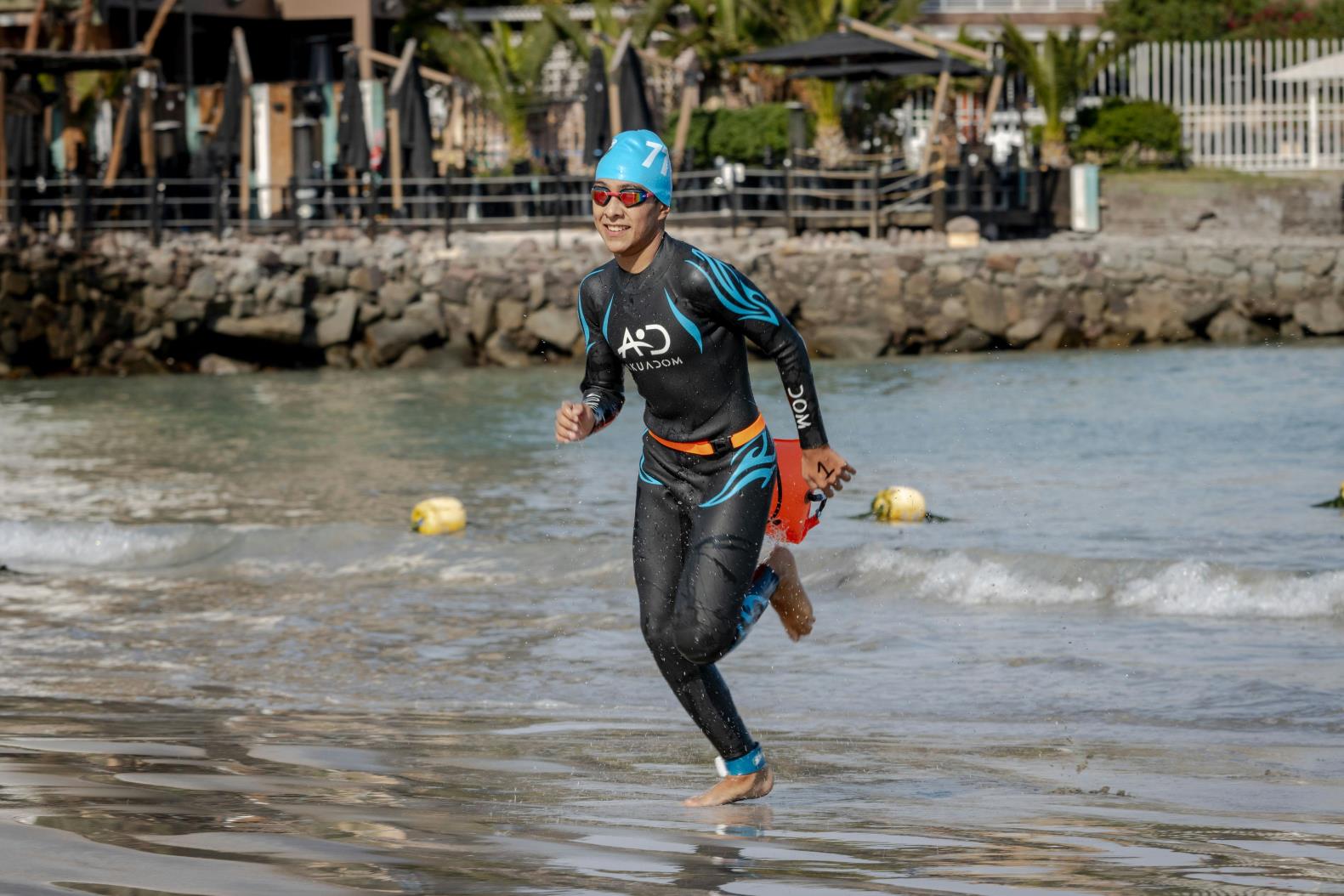
Get your FREE swimming workouts for triathletes book here.
Swimsuits
Most swimsuits are made from 100% man-made fibres. Natural fibres such as cotton absorb water, making them impractical for swimming. Manmade fabrics are mostly composed of nylon (from 80% to 90%) but also have a significant amount of Lycra or spandex (10% to 20%).
Some swimsuit manufacturers are now making their suits from recycled fishing nets, recycled plastic bottles and consumer waste which is great for the environment and can be 100% chlorine proof too, which means you many not even have to replace it that often.
It is difficult to recycle swimsuits made from nylon and other plastic based fabrics so when you swimsuit has decayed to a point when you cant use it for swimming then here are some ideas for what you can do this it at Tree Hugger.
Key take-away: Consider buying swimsuits made from recycled products. Speedo have suits such as this which are made from recycled materials. Zone3 also have made a sustainable range of products.
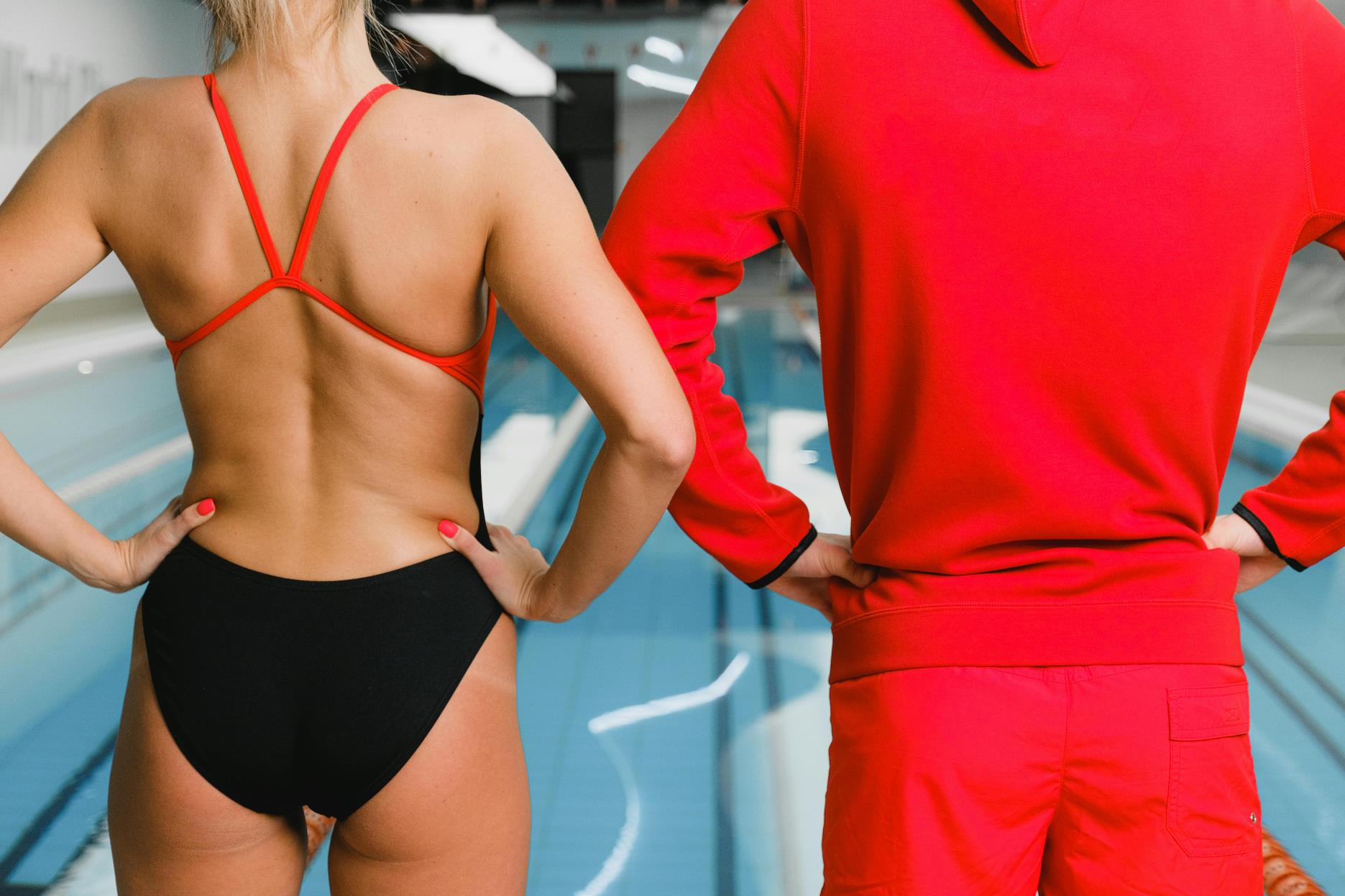
Get your FREE Open Water Swimming Sessions E-Book
Swimming hats
Swimming hats can be made from latex, silicone or lycra: silicone is recyclable, but not collected widely for recycling while latex and lycra (spandex) aren’t recyclable on a large scale yet. Some brands now make swim hats from recycled materials, so this may be worth a look.
Key take-away: Buy silicone hats that can be recycled more easily. If you hat does wear out then send it to a recognised recycling company.
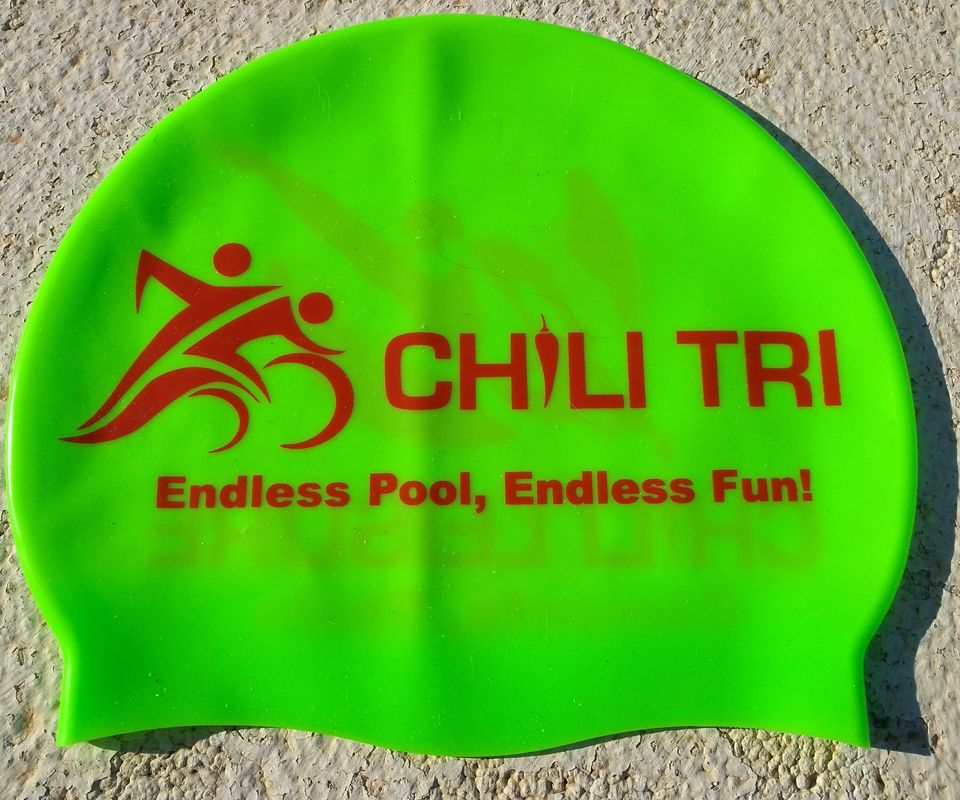
Many google manufacturers are now using recyclable packaging but very few make goggles from recycled materials. Your best bet for goggles therefore is to find a way to recycle them when you need to, using companies like the one below. I use Zoggs Predator Flex goggles which have lasted me over 5 years when used in conjunction with Cressi anti-fog which not only keeps the lens clear but seem to keep the rubber and plastic in good condition.
When you can not use your goggles anymore you can recycle them here.

Get your FREE Swim Workouts for Triathletes E-book
Liquids and Lubes
Anti-Fog
Many swimmers use anti-fog products to ensure their goggles don’t steam up. There are many products available for this, but the key here is to make sure they state that they are “reef safe” or “ocean safe”, as not all are.I use Cressi Anti-fog spray I have heard some swimmers swearing by baby shampoo, but I avoid this as some baby shampoos contain a preservative called quaternium-15, which when used releases formaldehyde, which can cause skin irritation. There is a long list of other chemicals in baby shampoo too, which are probably best not to introduce to rivers, lakes, and the sea. To be fair, there are adult shampoos which also contain harmful chemicals. If you google “shampoo safe for the ocean” you will find a list of products that won’t damage the water you swim in but I’ve no idea if they will help keep your goggles fog free!
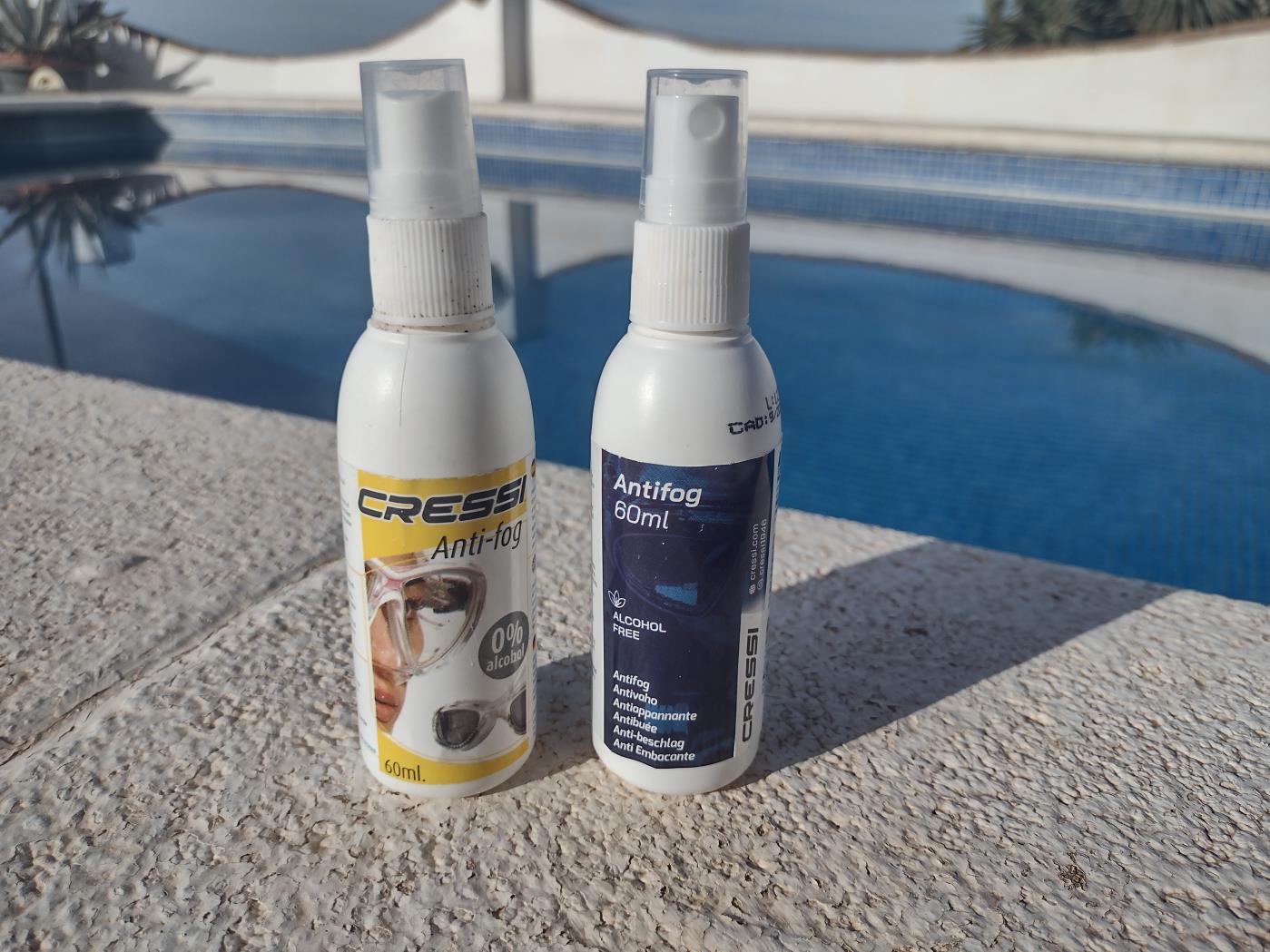
Wetsuit lube / anti-chafing products
There are many products that swimmer use to help stop chaffing when swimming from Vaseline to other products specifically designed for the task. Vaseline is a by product of the petroleum process and I’d prefer not to introduce it to the water. In addition, it can damage the neoprene in your wetsuit. Using a product design for anti-chaffing is better but look out for products that state they are “ocean safe” or natural. I have seen products based on bees’ wax and aloe which you can try and also Body Glide.
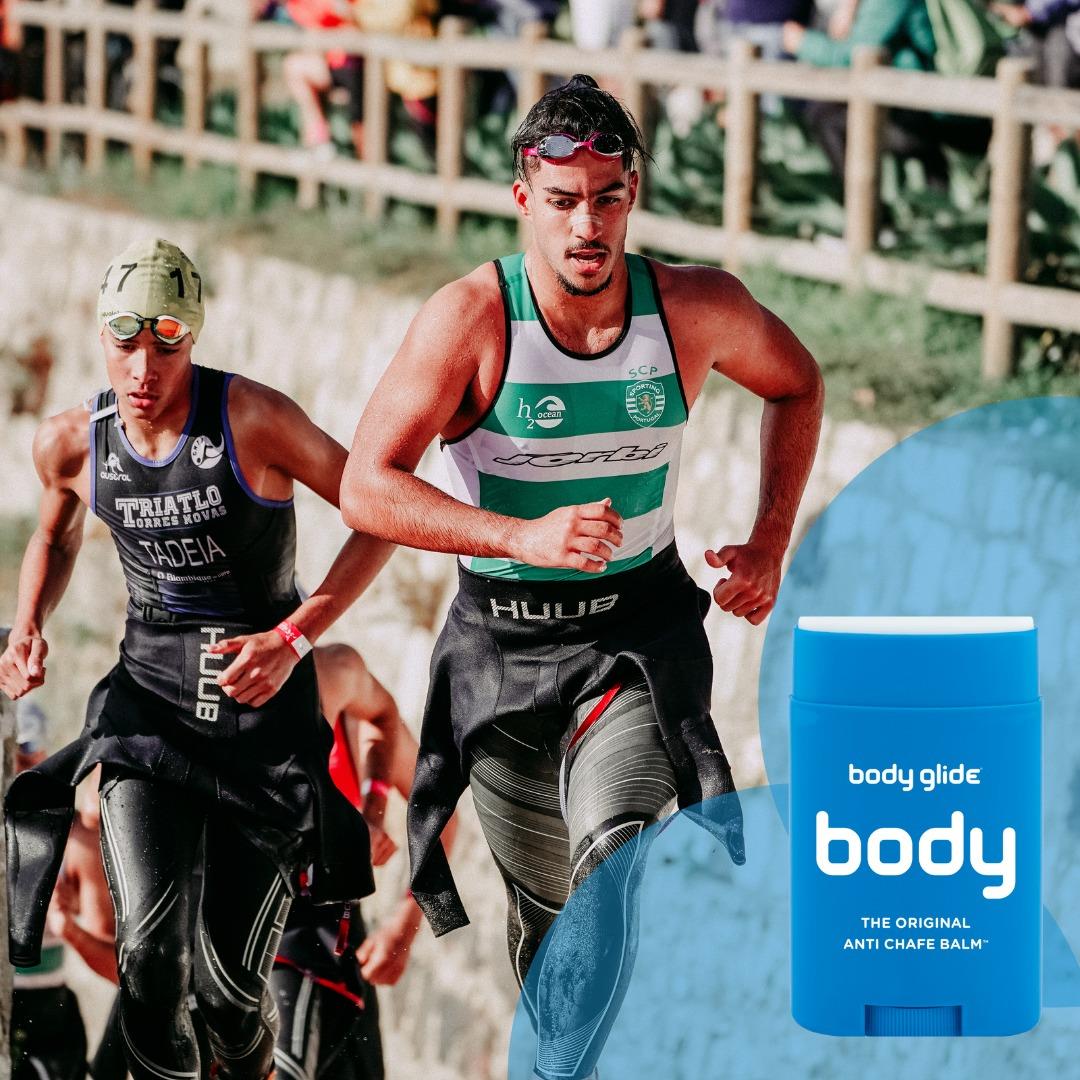
Sunscreen
Recently, researchers have voiced concerns about the harmful effects of chemical sunscreens on human health and the environment. Specifically, two of the most popular ingredients in chemical sunscreens — oxybenzone and octinoxate — have been shown to cause significant damage to coral reefs. A recent study revealed that about 14,000 tons of sunscreen end up in reefs worldwide, which can lead to bleaching, damaged DNA and abnormal skeleton growth in coral. When looking for sunscreen then look for mineral based products such as All Good sport sunscreen, Think Sport, Badger, Alba Botinica, Aveeno and Bare Republic. I said I wouldn’t list brands, but it can be hard to find mineral sunscreen, so I made an exception. Sorry!
I use Safe Sea sun screen which not only does not impact the environment but respells jelly fish!
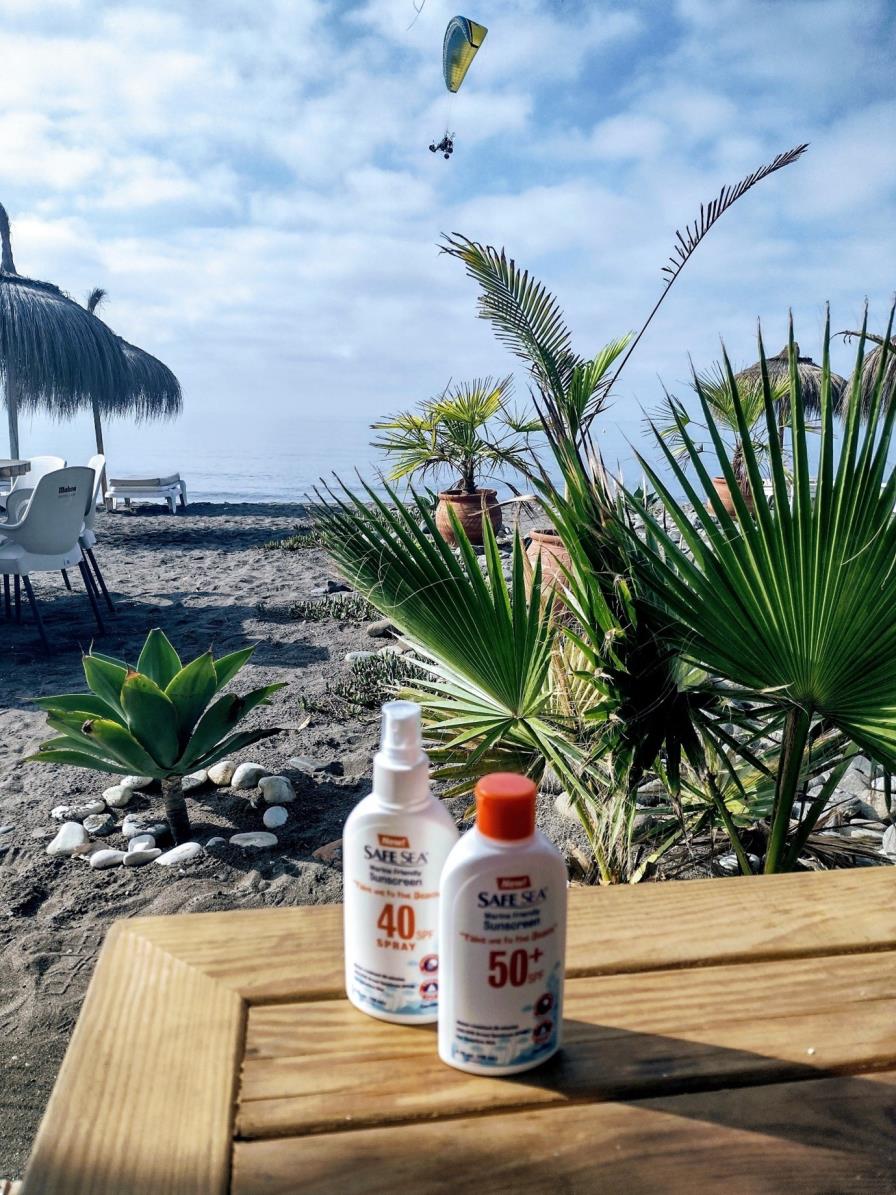
Get your FREE swimming workouts for triathletes book here.
Wetsuit Cleaning, Conditioning and Repair
Cleaning your wetsuit after your swim will help your wetsuit last longer so apart from using just fresh water there are some products on the market that contain no harmful chemicals and are biodegradable (plus have some very inventive names!). Using cleaning and conditioning products will keep your wetsuit in good condition and help it last longer.
It’s also a good idea to give your wetsuit a good clean after each swim so you don’t transfer parasites from one ecosystem to another. For example, in Spain we have a type of mussel that has appeared in some lakes that we don’t want to spread to other lakes so we are asked to clean boats, kayaks, SUPs, wetsuits etc when we leave. Below is an example of a sign you may see at a swimming venue in Spain:
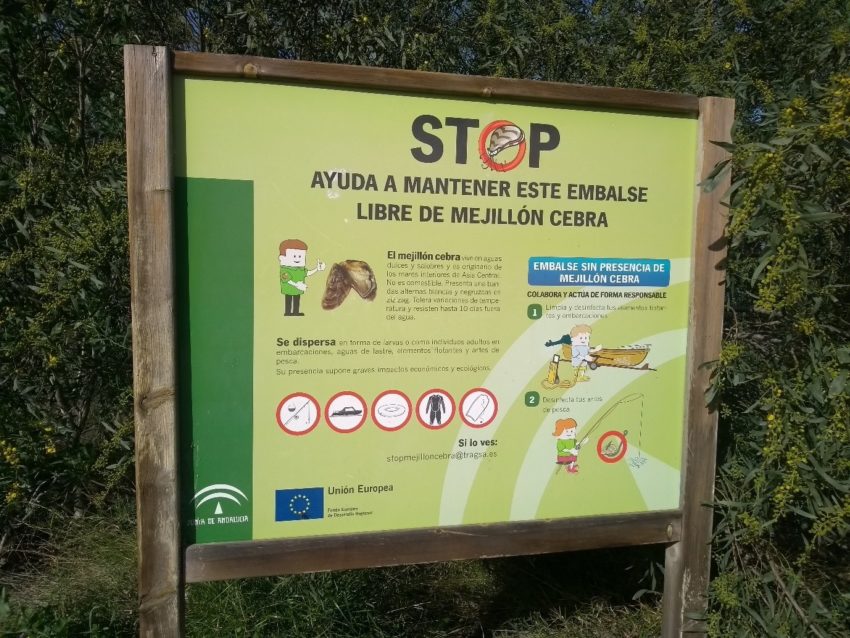
How to recycle your swimming hats and goggles
Sea & Stream is an outdoor swimming shop. Their focus is on offering sustainable products, gifts and solutions for outdoor swimmers. They are working on sourcing the most planet friendly options for goggles. Sea and Stream can also recycle your goggles and swim hats. To save them from going to landfill, send your old hats and goggles to them.
Wetsuit repairs
Repairing your wetsuit rather than replacing it is better for the environment as wetsuits are not easy to recycle. Some repair products contain substances that are toxic to aquatic life so ensure that you choose one with the least environmental impact and apply well away from the water plus make sure it’s fully dry before using the suit in the water. For major repairs, do an internet search for “wetsuit repair” as there companies that will do this for you. You can fix small tears using Black Witch.
Conclusion: Putting it all together
Many companies have already woken up to the impact of their products on the environment. You may already be doing the right thing to keep the areas you swim in the best they can be. But if you are thinking of buying new products then please take a little time to check that they are ocean/reef safe, biodegradable and as natural as they can be. If you have any ideas on how to recycle, reuse or know of ocean safe products, I would love to hear from you.
Here’s a FREE Swim Workouts for Triathletes Book with swim workouts, tips, technique, drills, kit and terms.
Swimming
training plans on TrainingPeaks.
Swimming
training plans on FinalSurge.
Would
you like to talk about your training? Get in touch here.
Karen Parnell is a Level 3 British Triathlon and IRONMAN Certified Coach, 8020 Endurance Certified Coach, WOWSA Level 3 open water swimming coach and NASM Personal Trainer and Sports Technology Writer.
Karen is currently studying for an MSc in Sports Performance Coaching at the University of Stirling.
Need a training plan? I have plans on TrainingPeaks and FinalSurge:
I also coach a very small number of athletes one to one for all triathlon and multi-sport distances, open water swimming events and running races, email me for details and availability. Karen.parnell@chilitri.com
Get your FREE Guide to Running Speed and Technique
Get your FREE Swim Workouts for Triathletes E-book
Get your FREE Open Water Swimming Sessions E-Book
FAQ: Open water swimming products and their impact on the environment
What are some common open water swimming products?
Common open water swimming products include wetsuits, swim caps, goggles, earplugs, swim safety devices (such as buoyancy aids and tow floats), and sunscreen.
How do wetsuits impact the environment?
Wetsuits are typically made from neoprene, which is derived from petroleum. The manufacturing process and disposal of neoprene can have negative environmental impacts. However, some companies are making efforts to produce eco-friendly wetsuits using more sustainable materials or recycled neoprene.
Are there eco-friendly alternatives to traditional wetsuits?
Yes, there are eco-friendly wetsuit alternatives available. Some companies offer wetsuits made from natural rubber derived from sustainable sources, like Yulex® or limestone-based neoprene. These alternatives aim to reduce the environmental impact associated with traditional neoprene wetsuits.
Do swim caps have an impact on the environment?
Swim caps are often made from latex, silicone, or rubber. While these materials are not inherently eco-friendly, swim caps can be reused multiple times, reducing waste. Consider choosing a durable swim cap and properly maintaining it to extend its lifespan.
What about goggles and their impact on the environment?
Goggles are typically made from a combination of plastic, rubber, and silicone. Like other plastic-based products, they can contribute to environmental pollution if not disposed of properly. To reduce the environmental impact, opt for high-quality goggles that last longer and prioritize recycling or responsible disposal when they reach the end of their life.
Are there any environmentally friendly alternatives for swim goggles?
Some companies offer goggles made from more sustainable materials, such as bio-based or recycled plastics. These alternatives aim to reduce the environmental footprint associated with conventional goggles.
How can I minimize the environmental impact of open water swimming products?
Here are a few steps you can take to minimize the environmental impact:
- Choose products made from eco-friendly or recycled materials when available.
- Opt for durable and high-quality products that last longer, reducing the need for frequent replacements.
- Properly care for and maintain your gear to extend its lifespan.
- Dispose of products responsibly by recycling or following local waste management guidelines.
- Consider purchasing from companies with sustainable and environmentally conscious practices.
Is there an environmental impact associated with swim safety devices and sunscreen?
Swim safety devices, such as buoyancy aids and tow floats, are generally made from materials like PVC or nylon. These materials, when not disposed of properly, can contribute to pollution. Regarding sunscreen, some formulations contain chemicals that may be harmful to aquatic ecosystems. Look for reef-safe or eco-friendly sunscreen options that minimize harmful impacts on marine life.
Remember, making conscious choices when selecting open water swimming products and properly disposing of or recycling them can help reduce the environmental impact and preserve the natural beauty of open water environments.
This website uses affiliate links which may earn a commission at no additional cost to you. As an Amazon Associate I earn from qualifying purchases. which may cover part of a cup of coffee for me to fuel my training.
#wildswimming #triathloncoach #triathlon #swimming #running #cycling #trainingcamps #trianingplans #chilitri #openwaterswimming #swimmingtrainingplan #cyclingtrainingplan #runningtrainingplan #swimming #cycling #running

